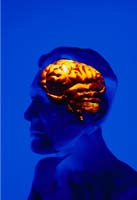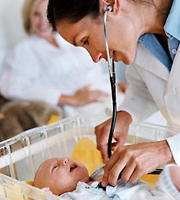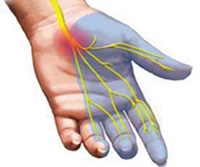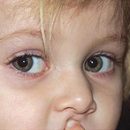Schistsephalia and heterotopia are the most frequent options for migration disorders with brain anomalies. During these defects, various neurological symptoms arises in the form of paralysis and rough development delay.
Content
Concept of schistencephalia
The peculiar abnormal brain anomaly is schizencephalia - total pathology, which occupies most of the brain and extending from the ventricles to the cerebral cortex. This malformation is well visualized on tomograms of the brain in the form of slots of varying degrees of severity.
With this shock, the dynamics of the circulation of the liquor in the ventricles is not broken, it is completely compensated. The manifestations of schistencephalia are associated with many neurological symptoms in the form:
- Hemiplegia (paralysis of the right or left half of the body)
- Tetraprea (parishes of all four limbs)
- convulsive syndrome
- Rough Psychomotor Development Delay
The concept of heterotopia
The most frequent option of migration disorders is heterotopy - the accumulation of neurons (cerebral cells), who stopped in various anomalous places on the way to the cerebral cortex. Such a stop occurs no later than the 5th month of intrauterine development. Isolated section of nodular mass of neurons (brain nerve cells), located in the wrong place, is called «heterotopion». Currently described the following options for heterotopia:
- Subependimal nodular (nodular) heterotopy
- Ribbon (layered, laminar) heterotopy
- Isolated (single) heterotopy
- syndrome «Double bark»
 Subependimal nodular (nodular) heterotopy is associated with the mutation of the FLN1 gene. At the same time, the boys die, and girls are born with nodular heterotopia. Subependimal heterotopy can be solitary and multiple. Localizes more often in the field of temporal and occipital horns of brain ventricles. Often visualized foci of subependymal heterotopia are regarded as focal corhemic lesions of the brain or as calcifications (clusters of dense tissue), which makes it difficult to diagnose the disease.
Subependimal nodular (nodular) heterotopy is associated with the mutation of the FLN1 gene. At the same time, the boys die, and girls are born with nodular heterotopia. Subependimal heterotopy can be solitary and multiple. Localizes more often in the field of temporal and occipital horns of brain ventricles. Often visualized foci of subependymal heterotopia are regarded as focal corhemic lesions of the brain or as calcifications (clusters of dense tissue), which makes it difficult to diagnose the disease.
In patients with isolated subependymal heterotopia, convulsions are usually emerging in the second decade. When the heterotopion is localized in the subcortic area (directly under the cortex of the brain), the brain bark often has an abnormal structure, with thin and minor convulsions. These patients have a different degree of psychomotor development delay, depending on the size and location of heterotopion. Paroxysms develop almost all patients.
For tape (layered, laminar) heterotopia, the accumulation of heterotopions parallel to the alleged cortex cortex. This version of heterotopia received the name of the syndrome «Double bark». It can be detected at X-cluttered Lissencephalia, developing as a result of mutation of the DCX gene (XLIS). At the same time, girls are born with syndrome «Double bark».
Standards of diagnostics of children with schizencephalius and heterotopy
The following standards are required to be diagnosed in the diagnosis of brain anomalies (schistcephalius and heterotopia):
- The absence of a critical period, including severe hypoxia (oxygen starvation) in the early postpartum period, in the presence of neurological status makes it possible to assume an anomaly for the development of a brain, especially at the ended newborn
- Particular attention is paid to an increase in the size of the brain ventricles: the premature child most often such pathology is a consequence of hypoxic (that is, there is an oxygen starvation) of the nervous system. At the ended newborn, this pathology testifies to the abnormalist of the brain
- For more accurate diagnosis of brain anomalies used specific immunological studies of liquor
- In the presence of convulsive syndrome in the early postpartum period, the child must undergo a radiological examination for the presence of brain anomalies
- Hypotension (low blood pressure) during the newborn period is a frequent symptom of coarse defects of brain development
- Delay in the pace of psychomotor development and violation of the development of postural reflexes are often also syndromes of brain anomalies
Identification of brain development vices in as early as possible, the quality of life significantly improves the quality of life of children. Without timely diagnosis of such anomalies of development, the sick child will be checked to receive therapy about hypoxic (that is, the resulting oxygen starving of the brain or intrauterine infection until the diagnosis of brain vice becomes apparent at an older age of the child.









